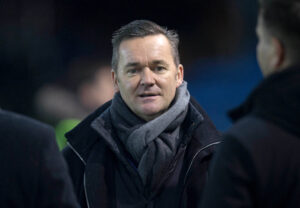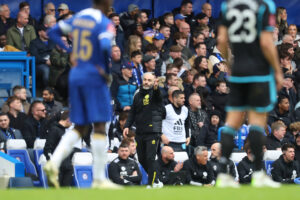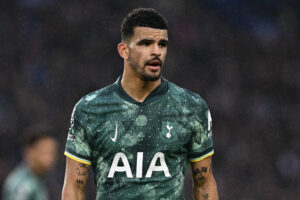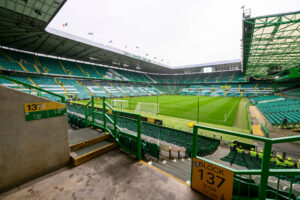The news that Santi Cazorla will miss the rest of the season is a huge blow for Arsène Wenger in a season in which at least six English clubs entertain realistic hopes of reaching the Champions League. It is, however, arguably an even bigger blow for the player himself as it means that the Spaniard, one of the most decorated players of his generation, may never achieve the pivotal role in a major triumph for either club or country that he has dreamt of for so long.
Cazorla took quite a while to start winning medals, but once he started he never really stopped. He began his career at Villarreal, making his debut late in 2003, but for much of the early part of his career his progress was stymied by the presence of Juan Riquelme, who made Cazorla’s favoured position of No. 10 his own.
After disappointing at Barcelona, yet another “new Maradona” who could not live up to the impossible demands made of (nearly) anyone burdened with that tag, Riquelme flourished at Villarreal. He led the tiny “Yellow Submarines” to a Champions League semi-final against Arsenal, which they only narrowly lost after he missed a last-minute penalty to level the tie on aggregate.
Such was Cazorla’s truly two-footed talent that he eventually became a regular for Villarreal, first alongside Riquelme and then, when Riquelme returned to Boca Juniors, as his replacement. He was a major player for Villarreal as they continued to punch way above their weight in La Liga, qualifying for the Champions League on several occasions, including for the 2008-09 season when they were again knocked out by Arsenal. Eventually, via a detour in Malaga for a single season, he joined Arsenal in 2012, presumably on the basis that if he couldn’t beat them, then he had better join them.
Cazorla was one of the trio of attacking signings that Wenger made after losing Robin Van Persie to Manchester United, along with Olivier Giroud and Lukas Podolski, and for all Giroud’s goals it is surely unarguable that Cazorla has proved to be the most important signing of the three.
He initially began as a No.10-cum-winger, but after the high-profile and expensive signings of first Mesut Özil and then Alexis Sanchez, he found his natural position in central midfield, where he may not have been much of a tackler but he was undoubtedly one of the finest passers in the Premier League.
Indeed, most of Arsenal’s best performances since his signing, notably the 2014 FA Cup final win against Hull and the utterly uncharacteristic and un-Arsenal-like away win at Manchester City early in 2015, were largely down to Cazorla’s brilliance in midfield, as he effortlessly took the ball off the back four and initiated attacks with a dazzling mixture of feints, dribbles and passes, as well as a fair number of goals.
That is why the past two seasons have been so disappointing for Cazorla and by extension Arsenal and Wenger. When Arsenal won their second successive FA Cup in 2015, thrashing an admittedly hapless Aston Villa 4-0, everything seemed set fair for a meaningful title challenge the following season; indeed, it was the first thing that the Arsenal players spoke of as they celebrated at Wembley.
That hope was soon curtailed, not so much by an opening day home defeat to West Ham as by the autumnal injury to Cazorla just as the Gunners looked like they might win the league. Typically for Arsenal in recent years, the injury was initially dismissed as being short-term but soon stretched to nearly six months. He returned in time to fortify Arsenal’s eventual fight for a Champions League place, but the much longed-for title bid never materialised.
For all Arsenal’s supposed riches in midfield, Jack Wilshere was the only genuine like-for-like replacement for Cazorla and in the absence of both of them Wenger is now left with what is probably the worst central midfield combination of his entire 20-year tenure at Arsenal. He has to choose from three largely defensive or holding midfielders in Coquelin, Xhaka and Elneny, and an attacking midfielder in Ramsey whose performances have been poor since Euro 2016. Now, with Cazorla out for the rest of the season, Arsenal will surely struggle even to make the top four; his return last season galvanised the team in their final push for a Champions League place, but that will not happen this time around.
Cazorla is now 32 and it is unlikely that his resistance to injury will improve in the future. If that is the case, he is unlikely to lead Arsenal, or any other club, to the league title or European triumph that has so far eluded him in his career. In that respect, his club career may ultimately come to match his international career, in that he may have won considerable amounts of silverware but he has never been truly instrumental in its acquisition.
Cazorla was one of the many “nearly men” of the great Spanish generation of players that won every international tournament they entered between 2008 and 2012. Like David Silva and Juan Mata, he was certainly an important squad member for most of that period, but despite winning nearly a century of caps (his current tally is 77) he has never truly been a first-choice player for his country.
Thus, Cazorla, as he approaches the end or at least the final stages of his career, may come to resemble other fine players who, for all their undoubted achievements, never really fulfilled themselves completely by becoming the key player in a major victory. Cazorla has never won even a single domestic league title. After his latest devastating injury, it appears increasingly unlikely that he ever will.
Main Photo






